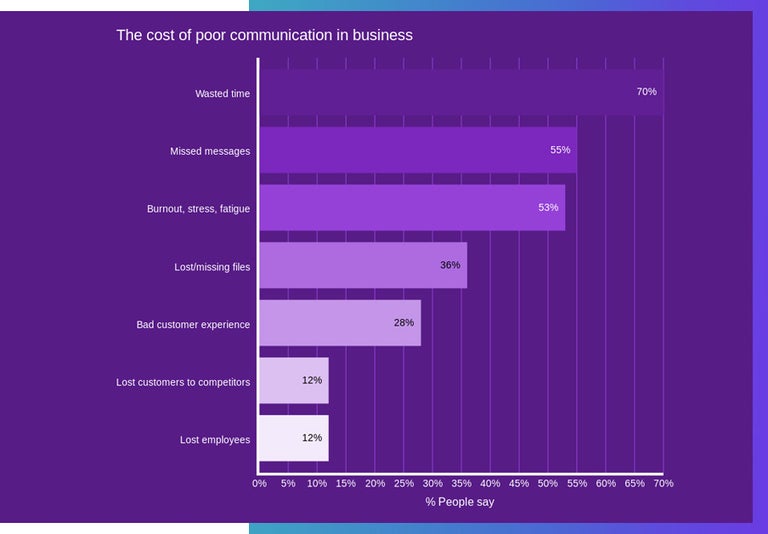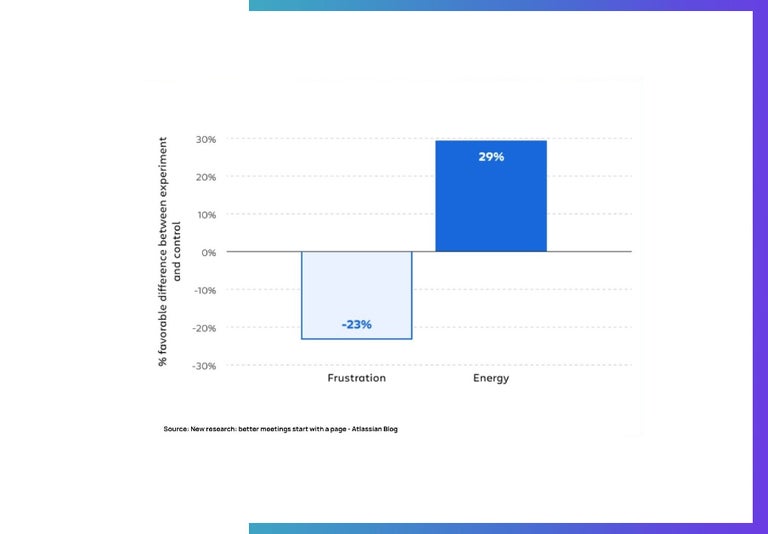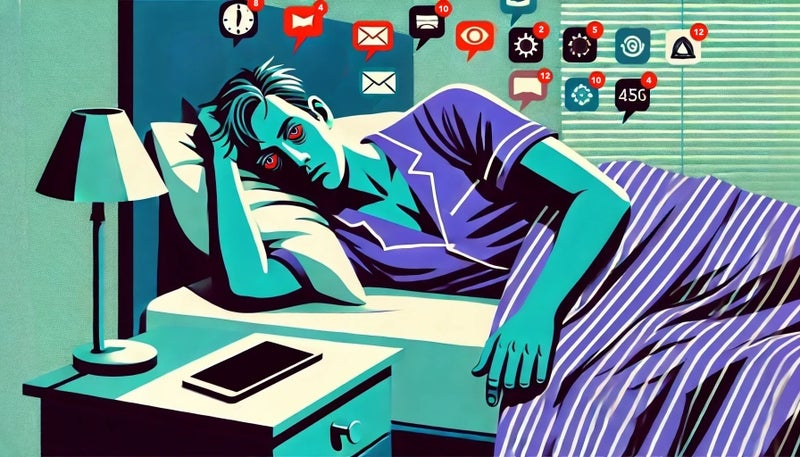Contents
- Communication Chaos
- The Real Cost
- 3 Power Moves for Effective Remote Communication
- Dial In Your Communication
Your Slack is erupting. Your inbox is a war zone. That "quick sync?” It just devoured an hour you'll never recover. And guess what... that deadline-sensitive work - two tabs over - is STILL whispering to you. Welcome to the thunderdome of bad remote work communication. It's time to drop the catchup catastrophe and take control.
Does remote team communication make your workday easier or …impossible?
Remote work is by far the best way to work these days. But you need to address the elephant in the room.
Communicating while working remotely is easy to botch.
Remote workers often drag the ball and chain of office life into their homes, birthing a Frankenstein's monster of outdated practices propped up with shiny new tech.
The result? A communication collision that's suffocating the true potential of working remotely.
A recent Gallagher survey revealed that the sheer volume of communication is now one of the top barriers to success in the workplace, moving from 8th to 6th place in the last year.
We're drowning in a tsunami of messages, meetings, and misaligned expectations.
But here's the thing: it doesn't have to be this way.
Communication Chaos
When Old Habits Refuse to Die
Let me share a hand-over-heart, personal story from a couple years back.
Picture this: It's a regular Tuesday morning.
My team lead, still haunted by the ghost of office past, decides it's time for a "co-working session." I obediently jump on Microsoft Teams, navigate the mandatory 10 minutes of small talk, and then... silence.
For FOUR. SOLID. HOURS.
There I sat. Camera on. Team lead in the top right corner of my screen. Working on the same thing I was before.
It was like a silent film, but instead of Charlie Chaplin, it starred stressful, unproductive, unfocused work.
Now, you might be thinking, "Come on, that's an extreme case, right?" Sure, it's on the far end of the spectrum. But even the everyday scenarios don't exactly paint a rosy picture.
Let's break down the nightmare too many remote workers face.
The Meeting Maze
Your calendar has morphed from a scheduling tool into a losing game of Tetris.
Work's now crammed into the microscopic gaps between endless video calls instead of the video calls fitting around your work.
A recent Atlassian survey of 5,000 knowledge workers shared the horrifying truth.
An insane 78% of workers feel like they're drowning in so many meetings, it's nearly impossible to get their actual work done.
Not enough? Then, 51% of those surveyed admitted to working overtime multiple times a week just to catch up.
The verdict's in. We've traded meaningful collaboration for digital presenteeism.
The "Quick" Call Trap
You're racing against a deadline, deep in the flow zone, when suddenly - PING... "Hey, got a sec?"
Familiar?
These impromptu calls are the vampires of deep work, draining the lifeblood from your workday. What begins as a "quick sync" inevitably bloats into an hour-long conversation.
That's not even mentioning the time it takes to get back into flow when you're done!
All the while, that work on a deadline awaits.
The Always-On Anxiety
We've all been there. Adding work email to our phones. Sharing personal numbers "just in case." Downloading our company's messaging apps "to stay in the loop."
All in the name of staying connected.
But connected to what, exactly? A never-ending stream of notifications?
That nagging fear of missing a crucial message keeps growing like a digital monster. Your "quick Slack check" mutates into a 30-minute reply marathon.
And don't even get me started on the phantom phone vibrations. You know, when you swear you felt your phone buzz, but NOPE. It's just your brain, hardwired to anxiety mode.
Work-life balance? More like work-life blur. We've taken the worst aspects of office interruptions and made them a 24/7 reality.
It's like we've built ourselves a cozy little prison of perpetual availability. The walls? Made of screens. The bars? Notification pings. And the worst part? We're both the inmates AND the wardens.
The Real Cost
Beyond Wasted Time
These aren't just minor irritations - they're actively ruining your work day.
A Miro survey of over 2,000 knowledge workers revealed a not-so-shocking truth. Some 40% of responders said they were stuck in unnecessary meetings every single week. But it doesn't stop there.
These time-wasters:
- Massacred productivity for 61%
- Got in the way of focus for 50%
- Sent stress levels through the roof for 51%
But it's not a meeting specific problem. The avalanche of communication is taking a serious toll.
A Project.co survey uncovered that 70% of employees admit to wasting precious time due to communication issues. Even more shocking, 53% of employees point to these snafus as a major source of burnout, stress, and fatigue.

It's just not working!
3 Power Moves for Effective Remote Communication
It's time to shatter this cycle.
Here are 3 much-needed strategies to transform your remote communication from a chaotic mess into a productivity paradise.
1. The 24-Hour Rule
It's time to lay down the law. Here's your new team mantra:
Messages get acknowledged ASAP (a simple emoji reaction will do), but full responses come within 12-24 hours.
"But what about emergencies?" I hear you say. Easy. Set up a clear emergency protocol for those genuinely urgent issues.
Think Red Alert Communication Channel where notifications stay on. If it's not in the channel, it's not an emergency. Strict rules apply!
The harsh reality is that not all messages are created equal. Some need immediate attention, sure. But most? They can wait. And they should.
Replying to messages should never become your day's core work.
Pro Tip: Block focus time in your calendar. Let everyone know when you're in the zone and unreachable. Or, if you're feeling fancy, schedule specific reply windows.
It's just office hours for your inbox. You get peace of mind knowing exactly when you'll tackle comms, and your colleagues get predictability. Win-win.
2. Slay the Meeting Monster with Async Updates
Let's talk about a little magic trick called asynchronous communication.
It's like time travel for your workflow.
Replace those soul-sucking update meetings with short, snappy videos. Tools like Loom are your new best friend.
Record a quick update, demo, or explanation, and boom - you've just freed up a chunk of everyone's calendar.
You get to comment, rewatch, speed it up, heck, even embrace slow-mo. We won't judge. It's a remote team communication tool so effective it's almost sinful to ignore.
Need proof? When tech giant Atlassian challenged their teams to replace just one meeting with an async video update, they stole back a mind-bending 5,000 hours of focus time over two weeks.
That's not productivity - that's corporate sorcery.
3. When You Must Meet, Make it Count
This isn't meant to be a meeting hate slugfest. Sometimes you do actually need to get the gang together for a face to face. When that happens, it's time to get efficient.
Enter the page-led meeting.
It's simple. Before the meeting, create a clear document that lays out the context, goals, and key decisions needed and share it with attendees.
When the meeting starts, give everyone time to read it (yes, during the meeting).
Why does this work? It gets everyone on the same page (literally) from the get-go.
No more wasting half the meeting laying out context or stumbling through zero structure. You dive right into the meaty discussions and decision-making.
The result? Meetings that are less frustrating and actually accomplish something. Imagine that - a meeting that doesn't end with "let's schedule another meeting to discuss this further." Revolutionary, right?
This comes from another of Atlassian's famous experiments.
They found that attendees of facilitated page-led meetings were 23% less likely to feel frustrated and 29% more likely to feel energized. Sounds pretty convincing to us.

Dial In Your Communication
Asynchronous communication isn't always easy.
There's a learning curve, and sometimes you just want to hash things out in real time. But it's still far more effective than trying to communicate like it's 2002.
Embracing asynchronous communication and optimizing your synchronous interactions isn't just about improving productivity. It's about working better with your team and reclaiming your sanity.
It's time to shed those outdated office norms that we've mistakenly hauled into the remote work arena.
Need some real-world inspiration? Here's a word from our VP of Talent & People Operations, Heather Lother:
"One thing I love about Crossover? We're NOT a meeting-heavy culture.
Instead:
- We use ticketing systems to track tasks, and not just support/engineering ones!
- We use shared chat spaces for async communication across time zones.
- We leverage comments and version history in Google Docs/Sheets instead of saving "v5167.2_JOAN'S EDITS""
The result? Teams who nail this time management game are 1.6x less likely to engage in "productivity theater." You know, that thing where we all look busy but don't actually accomplish much? Yeah, that.”
Heather's insights really highlight what embracing async-first communication can look like.
It's about cutting down on meetings AND finding smarter, more efficient ways to collaborate and get things done.
Don't let another day of communication chaos hold you back. Pick one strategy and implement it this week. Your future, more productive, less stressed self will thank you.
It's time to show the world what remote work communication could be, when done right.









